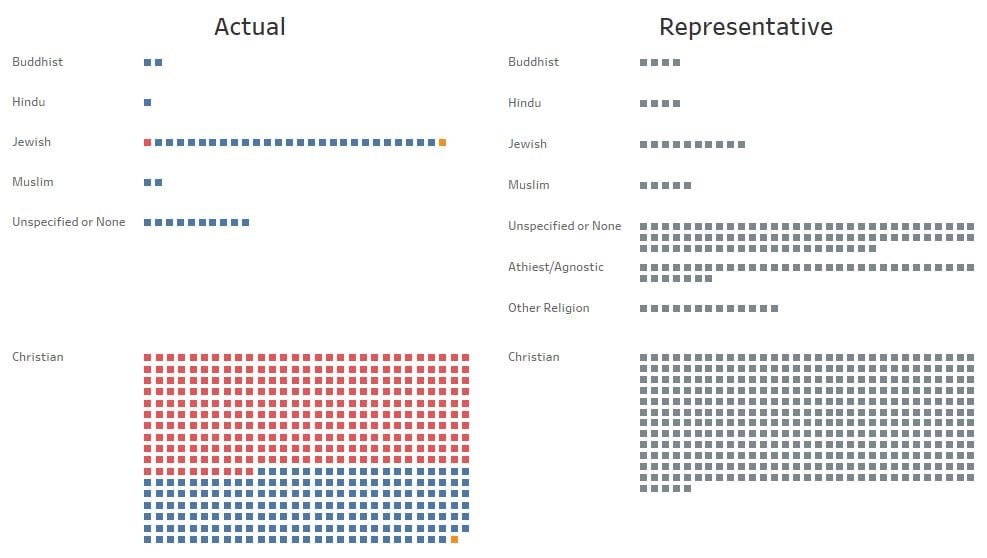What Would a Truly Representational US Congress Look Like?
Even though the diversity of the US Congress has increased in recent years, a trend that looks to continue after the midterm elections in November, overall the 538 people who serve in Congress are not actually that representative of the US population as a whole. Congress is still way more white, male, and Christian than the US as a whole.
In 2016, Ken Flerlage looked at the gender, religious, and racial diversity of the United States and compared it to that of Congress.
Congress has 104 women (19%) and 431 men (81%) while the United States population is 51% female and 49% male. In order to be truly representative, in terms of gender, 168 seats currently held by men would need to be won by women (taking the number to 272 women and 263 men). It is also worth noting that, of the 104 women, 76 are Democrat (73%), while only 28 are Republican (27%).
And here is the visualization for religion:

7.1% of the population are atheist or agnostic and 2.4% ascribe to “other” religions (this includes “don’t know”, other world religions, Pagan, Wiccan, Native American religions, and numerous others), yet not a single member of Congress falls into any of these categories.
When you hear people saying that America is still largely a patriarchal & white supremacist society, this is what they are talking about. It’s not just people being hyperbolic.
You could easily expand on this analysis by breaking it down by age, income, education, urban vs rural, sexual orientation, and occupation. You could guess that a truly representational Congress would be younger, waaaay more poor, less accredited, more urban, less straight, more working class, and, when you consider the gender & racial factors, much more politically progressive, but it would be illuminating to see the actual numbers. I’d love to see the NY Times (maybe The Upshot?), FiveThirtyEight, or The Pudding tackle this analysis.
P.S. It’s also worth noting a truly representational Congress would include full voting members from Puerto Rico and Washington DC as well as from other US territories. And maybe separate Native American representation?





Stay Connected